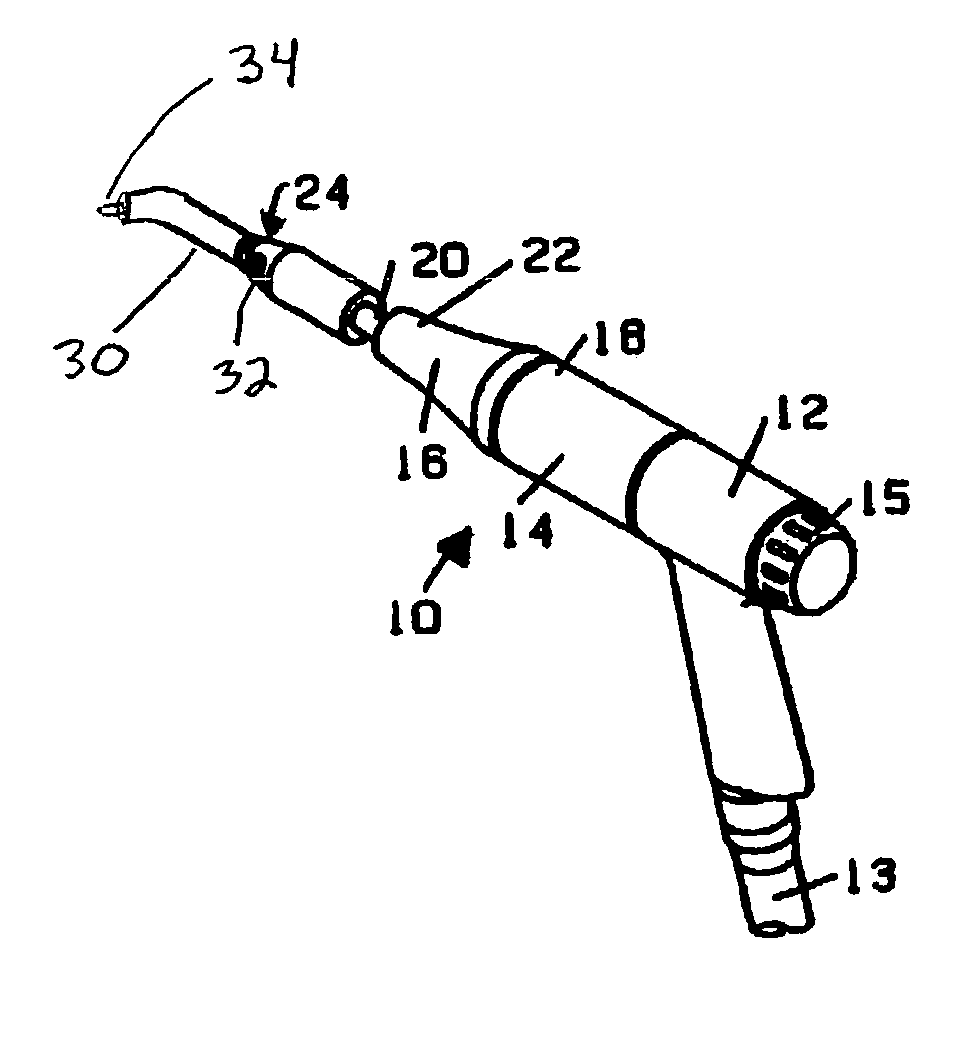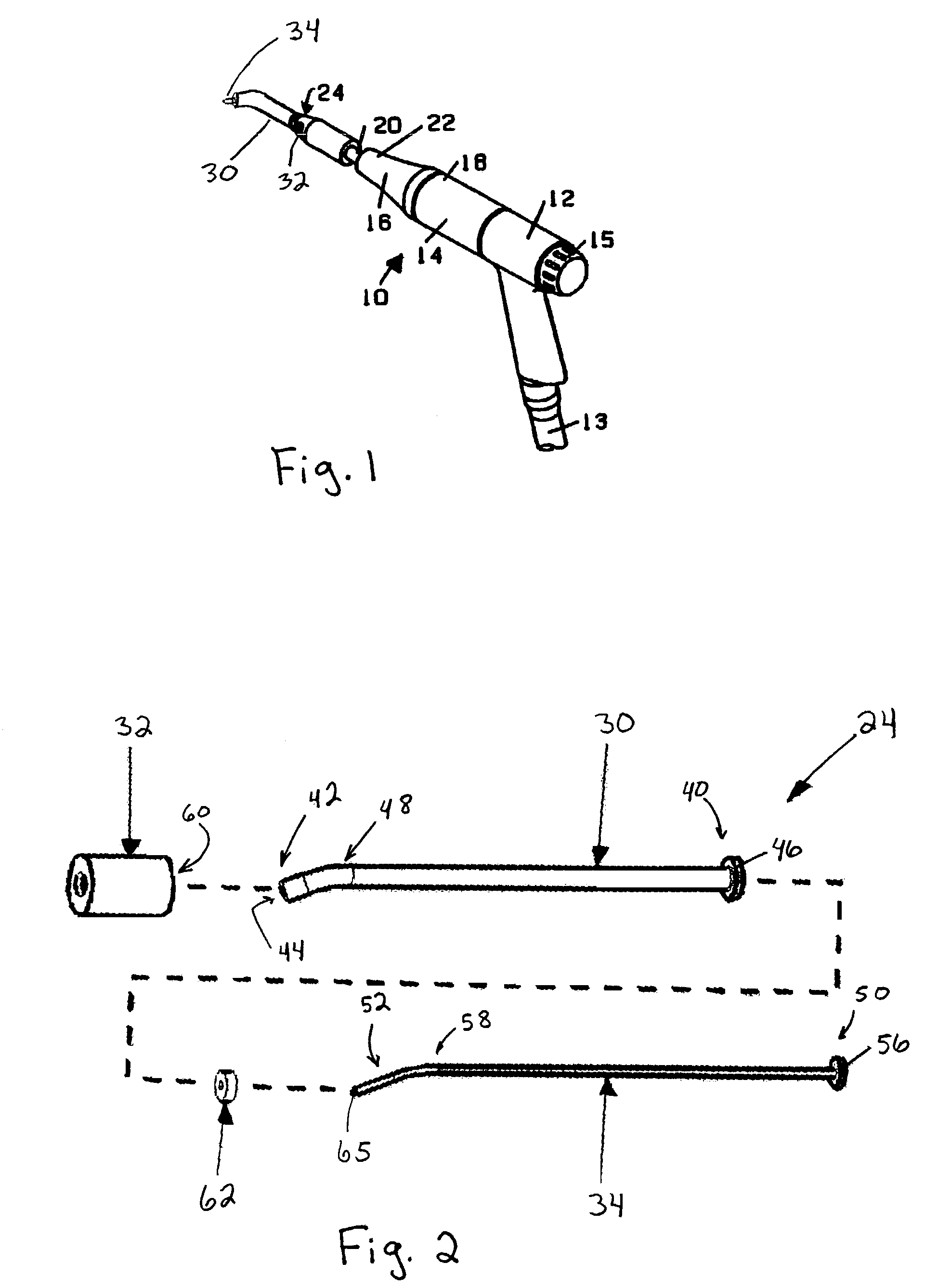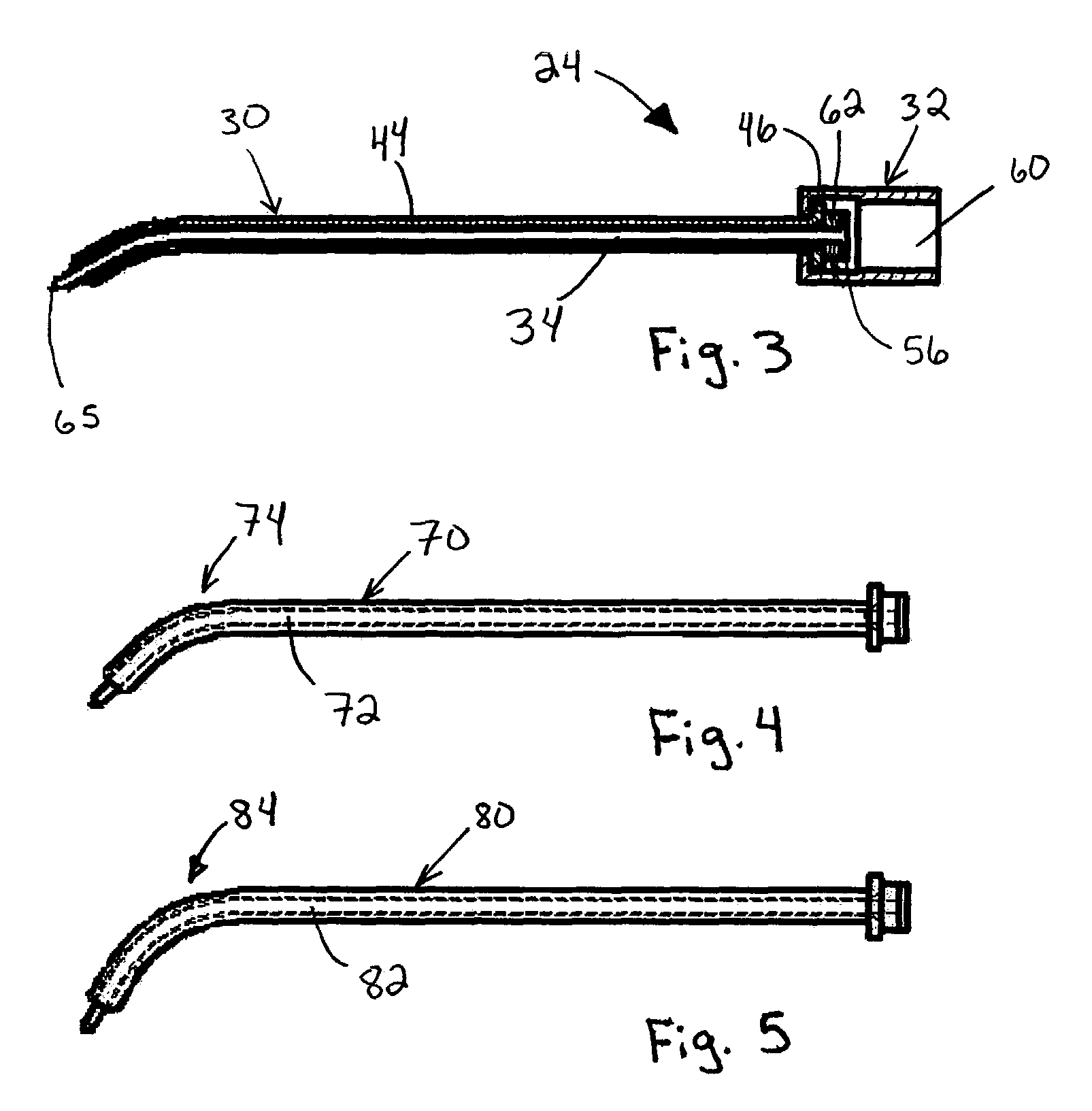Method for performing automated microfracture
a micro-fracture and automated technology, applied in the field of articular cartilage repair, can solve the problems of limited ability to repair or heal itself, low or insignificant blood flow to the articular cartilage, frequent injuries and defects, etc., and achieve the effect of reducing or eliminating the risk of penetrating too deeply into the bone plate and quick creation of micro-fractures
- Summary
- Abstract
- Description
- Claims
- Application Information
AI Technical Summary
Benefits of technology
Problems solved by technology
Method used
Image
Examples
Embodiment Construction
[0027]The instruments, method, and steps of the present invention are now described in more detail. The method describes the steps to perform an automated surgical microfracture procedure on subchondral bone to repair or regenerate articular cartilage at a full-thickness defect. Some of these steps described in the method are known to those skilled in the art and will not be discussed in great detail. Further, one skilled in the art will appreciate that certain steps may be altered or omitted while other steps may be added without departing from the scope of the invention.
[0028]Further, the novel microfracture method of the present invention will be described in connection with arthroscopic knee surgery; though one skilled in the art will appreciate that the microfracture method may be done as an “open” procedure as well. Specifically, the method will address a patient having unstable cartilage covering the underlying bone or a full-thickness defect (i.e., loss of articular cartilag...
PUM
 Login to View More
Login to View More Abstract
Description
Claims
Application Information
 Login to View More
Login to View More - R&D
- Intellectual Property
- Life Sciences
- Materials
- Tech Scout
- Unparalleled Data Quality
- Higher Quality Content
- 60% Fewer Hallucinations
Browse by: Latest US Patents, China's latest patents, Technical Efficacy Thesaurus, Application Domain, Technology Topic, Popular Technical Reports.
© 2025 PatSnap. All rights reserved.Legal|Privacy policy|Modern Slavery Act Transparency Statement|Sitemap|About US| Contact US: help@patsnap.com



